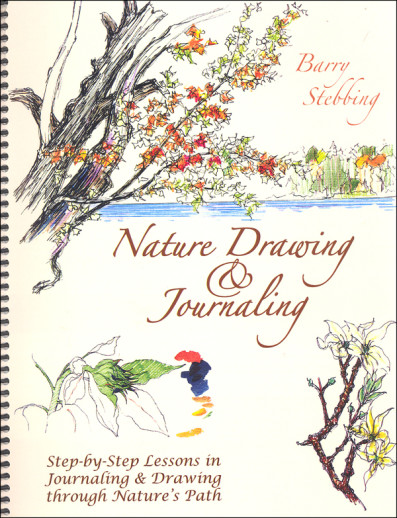We use cookies to make your experience better. To comply with the new e-Privacy directive, we need to ask for your consent to set the cookies. Learn more.
Nature Drawing & Journaling
If you can train yourself in the habit, keeping a nature journal offers not only the opportunity to continually hone artistic skills, but also provides ample opportunities to enjoy the outdoors, develop a deeper appreciation for nature, enhance penmanship and writing abilities and become a precious keepsake for years to come. This guide takes students lesson-by-lesson through developing their own nature journal and building the skills they'll need to capture examples of nature's beauty. Created by Barry Stebbing, author of the How Great Thou Art courses, these lessons are formatted similarly with short, easy-to-read lessons and a related assignment. There are 47 lessons total, the first segment focusing on assignments that can be done in the classroom, and later assignments which students will get to head outdoors to do. Lessons include designing the journal cover; learning how to appropriately frame the page; creating various tones in green and brown, and drawing specific objects or scenes such as onions, vines or tree trunks, landscapes, night scenes, farm animals, feathers, insects and much more. The lessons are illustrated with a variety of related drawings (both color and black-and-white) by Barry, some of which serve as examples to copy, and others to provide inspiration or examples for students' own drawing. The last piece of the book provides several blank journal pages with lines, a space for an inspiring quote and blank areas for drawing. You'll need a few specific supplies to complete the lessons, including a hardbound journal, a legal pad, a rubber band, colored pencils, a drawing pen, a writing pen, glue stick, tape, washable markers, a #6 watercolor brush (to use with the markers) and semi-gloss paper. Especially if you're not already emphasizing art in your curriculum, a course in nature journaling can provide your students a rewarding, creative tie-in to your science, English or even handwriting program and get them outdoors to enjoy that sunshine! Jess
| Product Format: | Softcover Book |
|---|---|
| Brand: | How Great Thou Art |
| Grades: | 3-AD |
| ISBN: | 9780971787452 |
| Length in Inches: | 11 |
| Width in Inches: | 9 |
| Height in Inches: | 0.75 |
| Weight in Pounds: | 1.4 |

